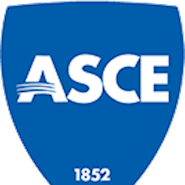ASCE has honored Maria E. Moreyra Garlock, Ph.D., P.E., F.SEI, F.ASCE, with the 2025 George Winter Award for integrating engineering and art in her scholarship and for promoting structural engineering as a creative discipline to a wide public.
Garlock is a professor of structural engineering at Princeton University with a PE license that she earned while working for Leslie E. Robertson (LERA) in NYC. Her scholarship is inspired by the needs of practitioners, and it spans from fundamental science/physics to the applied. She bridges academia and practice via studying resilient structural designs for extreme loads such as earthquakes, fires, and storm surges.
In the field of earthquakes, she pioneered the concept of self-centering steel moment frames during her Ph.D. studies and continued these studies early in her academic career. In the field of fire-structure interaction, she served as chair of ASCE-SEI’s Fire Protection Technical Committee, where she worked with a subcommittee on an Appendix to ASCE-7 Performance-Based Design Procedures for Fire Effects on Structures, which was included in the standard in 2016. Her research is also referenced in AISC 360 Specification for Structural Steel Buildings. She was awarded AISC’s 2016 T.R. Higgins Lectureship for her research on fire.
More recently, Garlock has begun research on water-structure interaction. Specifically, her research presents a paradigm change in improving coastal resilience, sustainability, and community well-being by introducing kinetic multipurpose structures. Two examples of these kinds of structures are kinetic umbrellas and kinetic bridges (where bridges transform into breakwaters or storm surge barriers). She conceived both design concepts and they were inspired by her scholarship in the social/artistic realm. The first paper on kinetic umbrellas was first published in 2020 in the ASCE Journal of Structural Engineering. The paper won the 2021 ASCE Moisseiff Award. The concept of kinetic multi-purpose structures for climate resilience exemplifies structural engineers as creative thinkers who are engaged in, and provide solutions to, pressing global issues. Since 2020, Garlock has disseminated these creative structural concepts via multiple journal papers and conference papers/presentations, and over a dozen invited talks.
Further, in May 2024, she hosted the Climate Adaptation Workshop: Structural Design for Coastal Flood Resilience, where climate adaptable solutions were discussed by participants, who were a mix of academics, practitioners, and government officials, ensuring broad and diverse perspectives were represented. Commitment to the social or artistic needs of the community through work performed in an area not directly related to engineering or science. In addition to the scholarship described above, Garlock studies the best examples of structural designs, past and present, which encompass the ideals of efficiency, economy, and elegance. These studies and related teaching (which engage the social and aesthetic value of structural engineering) are another venue for demonstrating a humanistic engineering approach and promoting structural engineering as a creative art to a wide public.
This scholarship and teaching were strongly influenced by Professor David Billington, who was the 1992 recipient of the George Winter Award. Although Garlock started on this scholarship by working alongside him, for more than 15 years she has independently developed new scholarship and pedagogical approaches related to the social and artistic value of engineering.
The award is named for Dr. George Winter, world renowned teacher and researcher at Cornell University, who died in 1982. The George Winter Award is intended as a recognition of the achievements of an active structural engineering researcher, educator, or practitioner who best typifies the late George Winter’s humanistic approach to his profession – i.e., an equal concern for matters technical and social, for art as well as science, for soul as well as intellect.



